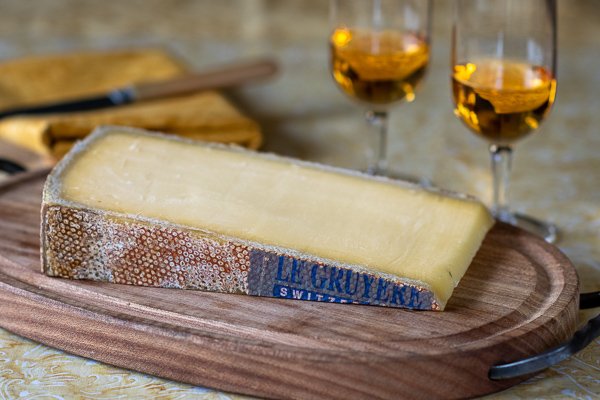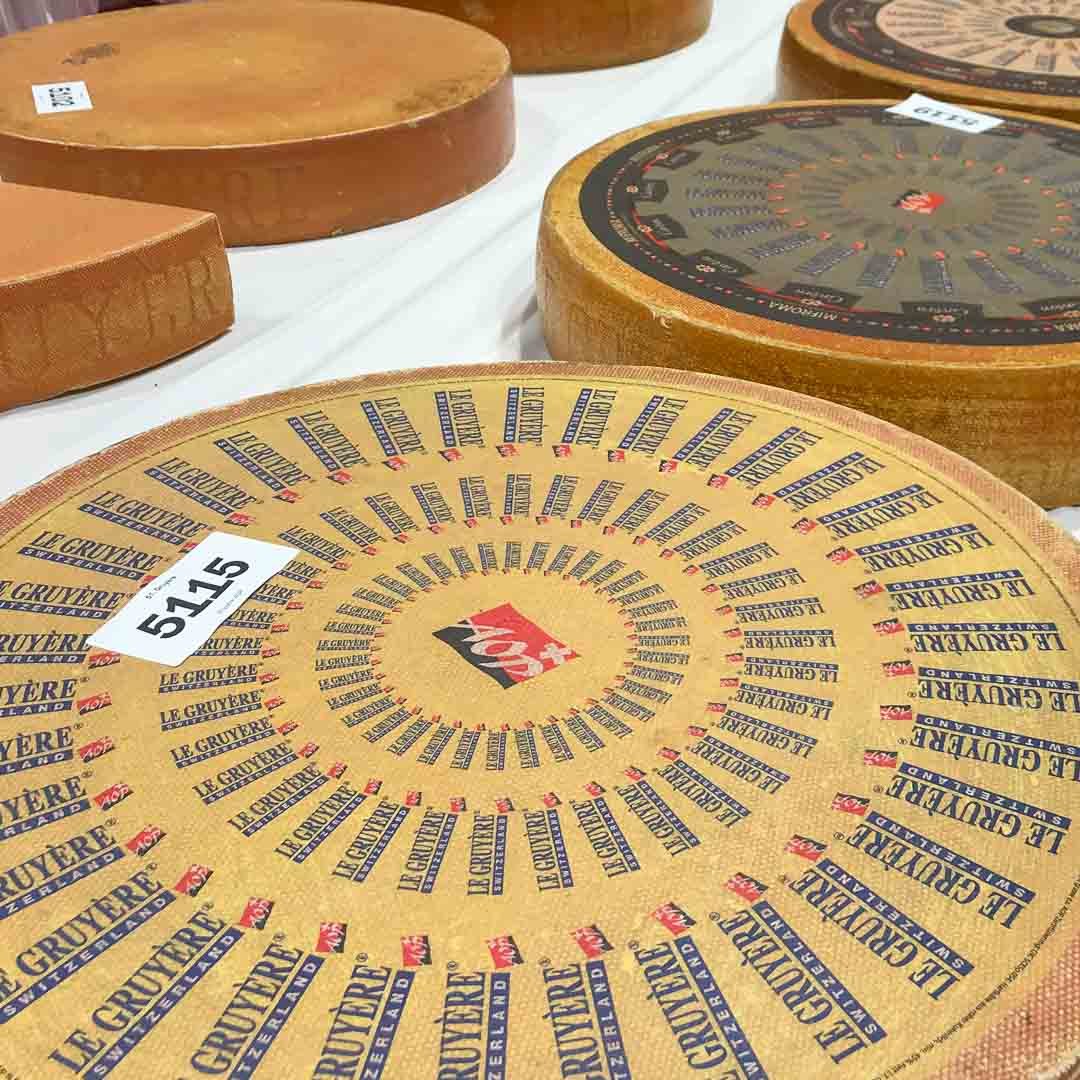Switzerland’s most famous cheese took it on the chin recently when a U.S. judge ruled that Gruyère is generic. American dairies have made Gruyère for years, he reasoned, so how can the Swiss claim the cheese is theirs? “The factual record makes it abundantly clear,” the judge wrote, that American consumers think of Gruyère as a type of cheese, not a product from a specific place. The Swiss will appeal, so the matter isn’t settled, but it’s a setback for those who believe we should respect European names like Asiago and Fontina. I wondered how the ruling was going down with people who sell both imported and domestic cheese.
“I find the decision infuriating,” Stephanie Ciano told me by e-mail. Ciano is the vice president of international purchasing for World’s Best Cheese, which distributes both European and domestic cheeses. I am editing her reply slightly for clarity and brevity. In her response, PDO stands for protected designation of origin, a prestigious European Union credential that Gruyère has. AOP (appellation d’origine protégée) is the French term for the same credential.
“There was a complete lack of understanding of the product by the judge and those lobbying for this decision,” wrote Ciano. “The standards for PDO products encompass geographic origin, cheesemaking practices, the diet of the milking animals, the aging, everything that makes that particular cheese unique and authentic. If any cheese can be labeled Gruyère, then the name becomes meaningless. It becomes a buyer-beware situation because you could be paying more money for an inferior product that has no resemblance to Gruyère AOP.”
Ciano believes that large American cheese producers want to use European names because these names have recognition and value. American producers are capitalizing on Europe’s high standards without having to comply with the same standards themselves. Gruyère AOP has to be made with raw milk and approved cultures in a copper kettle and matured for at least five months on spruce shelves. The document listing all the AOP rules runs to 22 pages. In Ciano’s view, putting the Gruyère name on an American cheese is freeloading.
Winning wheel: Gourmino Le Gruyère voted 2020 World Champion Cheese
“We make some lovely Amerian cheeses and we should be proud of them and call them by an original name,” says Ciano, “not try to copy others and take their names. This is a victory of industrial producers over artisan products and a blatant money grab.”
When products become household names, they can lose the right to trademark protection. Lawyers call that genericide. It happened to the elevator and the laundromat, which used to be brand names. In a sense, it has already happened to Cheddar and Gouda. The Dutch never protected Gouda and it’s too late now, so there are no lawsuits over Marieke Penterman’s Wisconsin Gouda.
If the Swiss prevail on appeal, requiring the U.S. to respect their PDO cheeses, then the Greeks will likely be right behind in defense of Feta PDO. The Israeli feta and French feta that I often buy will need new names, although they sure look and taste like feta.
Jaime Castaneda, the executive director of the Consortium for Common Food Names, was among those celebrating the judge’s ruling.
“For us this decision is not just about gruyère,” he told The New York Times. “This goes to the bigger fight that we have with Europe in which they are trying to confiscate all these names.”
Wisconsin cheesemakers argue that it shouldn’t matter where the cheese comes from as long as it tastes good. Cheese merchants on the front lines, interacting with consumers, aren’t so sure.
"Allowing the name Gruyère to be used for cheeses outside the Swiss and French Alps will create confusion among customers, hurt traditional producers and contribute to the words-mean-nothing trend of packaging in American supermarkets,” Gordon Edgar of San Francisco’s Rainbow Grocery told me by email. “In a generation, the connotation associated with the name Gruyère will change from respect and expectation of complex flavor… to bland and boring generic factory cheese. It's a sad day for traditional cheese.”
Escarole and Gruyère Salad with Toasted Walnuts
You may have to trim away a lot of dark escarole leaves to reach the pale, crisp heart, but don’t throw them away. Slice them into ribbons and add them to chicken-rice soup. If you can’t find nice escarole, substitute frisée or the crisp, pale hearts of butter lettuce. Adapted from The Cheese Course by Janet Fletcher (Chronicle Books).
Vinaigrette:
1-1/2 tablespoons extra virgin olive oil
1-1/2 tablespoons walnut oil
1-1/2 tablespoons sherry vinegar or white wine vinegar
1 large shallot, finely minced
Kosher or sea salt and freshly ground black pepper
Salad:
1/2 cup walnuts
2 heads escarole, pale heart only, washed and trimmed
1/3 pound Gruyère, trimmed of any rind, in matchstick-size pieces
1/4 cup minced Italian parsley
Make the vinaigrette: In a small bowl, whisk together the olive oil, walnut oil, vinegar, shallot, and salt and pepper to taste. Let stand 30 minutes to allow the shallot flavor to mellow. Taste and adjust the balance as needed.
Preheat an oven to 325°F. Toast the walnuts until fragrant and lightly colored, about 10 minutes. Cool. Break up any large piece by hand.
In a large salad bowl, combine the escarole, walnuts, Gruyère and parsley. Add the vinaigrette—you may not need it all—and toss to coat evenly. Season with salt and pepper and toss again. Serve immediately.
Serves 4 to 6



